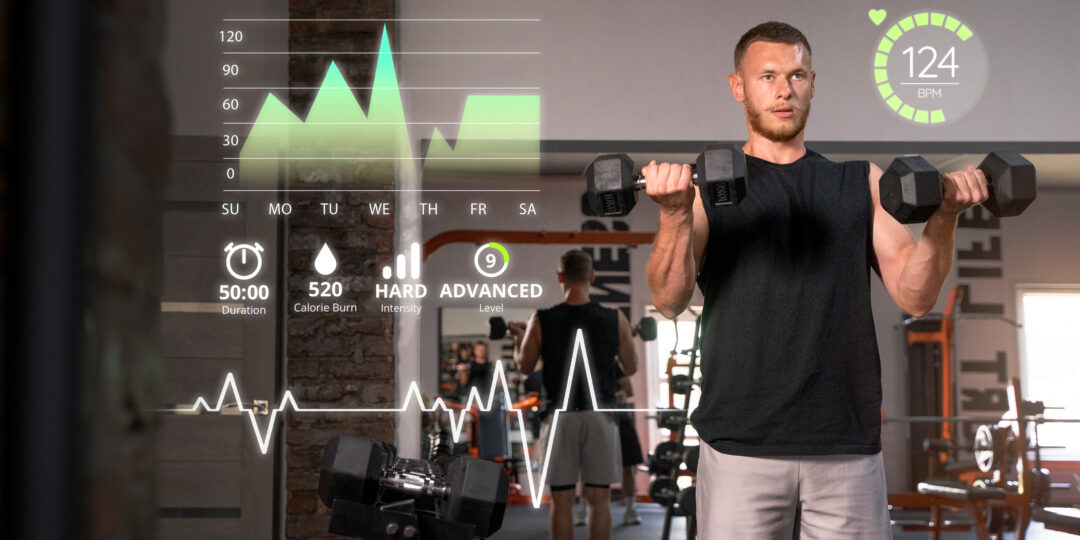Have you been searching for the best gym program to change your fitness experience? Selecting the right one from the many out there is a challenging task. For the beginner who wants to gain strength, the athlete who needs to gain performance, or that middle-aged man or woman who needs to shed some extra weight, the perfect fit is vital.
In this post, we’ll shed light on the best gym program depending on objectives and tastes. So, let’s take the plunge to discover the fitness roadmap that will work best for you.
Know Your Fitness Goals
Before heading to the best gym programs, it is important to understand your fitness objectives. Do you want to:
- Build Muscle
- Lose Weight
- Increase Endurance
- Improve Flexibility
Each of these goals needs a different kind of training and knowing what you want and what you wish to accomplish is the first step to discovering your right gym program. So once the objectives are set, the game has really begun!
Best Gym Programs That You Should Try
Now that you know your goals, let’s consider some of the most effective gym programs in categories that have become all the rage among health-conscious people.
- Focuses on compound movements.
- Develops the gross physique in particular and strength as a whole particularly swiftly.
The 5×5 Program:
5×5 training is among the most suitable workout applications for strength and muscle building. First, this program focuses on just five exercises: squats, bench press, deadlift, overhead press, and barbell row at five repetitions in five sets. Furthermore, this is quite a simple routine, yet it is easy for beginners to implement while at the same time delivering good results to advanced trainees. A huge plus? It’s time-efficient!
Pros:
- Focuses on compound movements.
- Develops the gross physique in particular and strength as a whole particularly swiftly.
Considerations:
- It demands a barbell and a couple of weight plates; therefore, you’ll need a gym membership or some home workout equipment.
The Heavy Duty Split
If you are more of a bodybuilder who wants to have a heavy workout session, spend less time in the gym, and have fewer days of exercise compared to the light-duty program, then the heavy-duty program is fit for you. In short, it looks at intense weight training sessions focused within a few days, with many days of break between programs. Indeed, this seems especially good if you feel a little like you’re being hit by the gym too frequently since each major muscle group is exercised only once a week.
Pros:
- Great for individuals with irregular working schedules.
- Stresses the recovery aspect of emotional intelligence.
Considerations:
- Best for those who have the time to dedicate to workout sessions, as these can be grueling at times.
Bro Split or Bodybuilding Split
The Bodybuilding Split or Bro Split trains one large muscle group in one workout session. To train the chest on Monday, the legs on Tuesday, the back on Wednesday, and so forth, for example. However, the mentioned method is preferred by bodybuilders who seek muscle hypertrophy.
Pros:
- Enables the selection of muscles to be worked on.
- Longer workout sessions lead to burns or muscularity having ample time to recuperate.
- A special protocol for each muscular zone.
Considerations:
It may be less useful for those who are just starting a certain workout since it might be most beneficial when muscle groups are made to work more often.
Full-Body Workouts
For those who might not afford the time needed to attend the gym several times a week, full-body workouts can prove to be very useful. Moreover, these routines contain several exercises involving different numbers of muscles, and therefore they are useful in attaining general muscular strength and mass.
Pros:
- Perfect for the newbie or for those who do not have much spare time.
- Uses up far more calories than one will in shorter training sessions.
- Can be done 2-3 a week.
Considerations:
- It may take a longer time to result in localized muscular development compared to split programs.
Push/Pull/Legs Routine
A balanced training option is the push/pull/legs routine. We can divide workouts into three categories: press movements (chest, shoulders, triceps), pull movements (back and biceps), and lower body movements (quadriceps, hamstrings, calf muscles). However, you can do each of them in a cycle so that the trainee is able to enjoy strength training in a round way.
Pros:
- Versatile and can be adapted for 3, 4, or 6-day splits
- Encourages balance—muscle groups are not strained
- Good emphasis on both upper and lower limbs
Considerations:
- They need more planning to incorporate equal distribution of workouts.
Tips on Selecting the Right Gym Program
Well, when there is a lot out there that must necessarily be out there to choose from, what is the best gym program for you? Here are some tips:
Try Them Out: You do not only stick with one program but can choose among various programs. Indeed, every gym has a trial membership or a workout; avoid missing any of them since they give the first-hand experience of every move.
Listen to Your Body: Learn how our bodies react. Maybe it’s time to change something if you find yourself getting tired or if you are not seeing some improvements.
Set Short-term and Long-term Goals: One challenge is to have short-term goals that motivate you each day. Furthermore, you also need long-term ones to guide the entire project. Therefore, it is important for your program choice to match both.
Consult a Professional: If you are still unsure, a personal trainer can assess your abilities. They can recommend a program you can customize to your fitness level and goals.
Tracking Progress
It makes no sense if you create the best gym program/plan and don’t track your progress. However, by tracking your progress, you can see if your plan works. This lets you make changes to stay on the right path.
Indeed, you can track progress in many ways. For example, take periodic photos. Additionally, you can also compare how much weight you can lift each week or watch your weights. It will ensure you work efficiently and motivate you for your progress.
However, you can check out more health and fitness tips by just tapping.

Conclusion
To conclude, take your time to find a program that fits your needs. However, remember, the key to the best gym program is to stick to it and be consistent. Moreover, don’t forget to rest and watch your diet. They help your body heal and adapt to weightlifting. Always use the correct form and warm up before intense sessions.
Also, after a few weeks, add more weight. Accordingly, it will help you progressively overload your body for more gains and strength.
Also, start adding more weights after a few weeks so that you can progressively overload your body for more gains and strength.
Author:
Menelaos Shima



